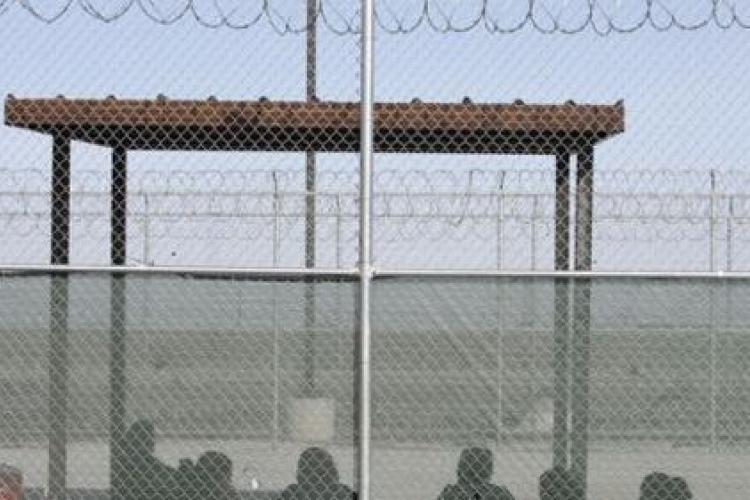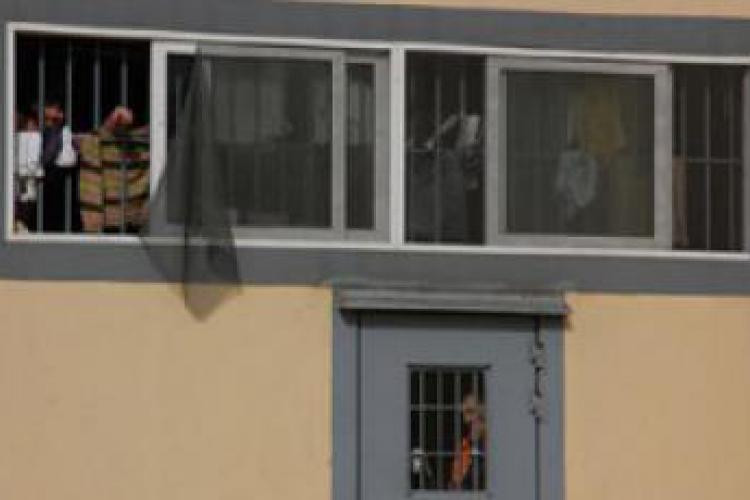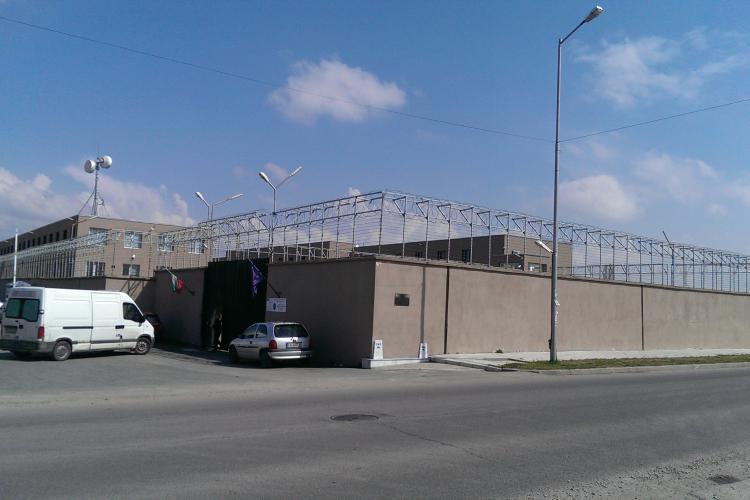Putting Immigration Detention in Interdisciplinary Perspective (Part I)
Posted:
Time to read:
Guest post by Michael Flynn, Director of the Global Detention project. A version of this essay appears in the concluding chapter of the forthcoming book, Challenging Immigration Detention: Academics, Activists, and Policy-makers (forthcoming Edward Elgar 2017), edited by Michael Flynn and Matthew Flynn. This is the seventh instalment of Border Criminologies’ themed series on 'Immigration Detention in an Era of Mass Mobility' organised by Mary Bosworth.
Part I
Late last year, as I was struggling to complete a co-edited volume on immigration detention policies and practices featuring contributions from an interdisciplinary group of writers, thinkers, and practitioners, I received an email from an activist involved in promoting “alternatives to detention” and other reforms in Europe. The activist was searching for an article written by a well-known academic specialist on detention that had been circulated by the Global Detention Project in its newsletter. In particular, she was keen to know more about the academic’s argument cautioning that while it is important to promote reforms like ending indefinite detention, larger questions are often overlooked, like whether immigration detention should even exist.
After I sent this person the sought-after citation, she wrote back: “Interesting that it shows a gulf between the academia's approach of continuing data analysis and the advocacy strategy the NGO sector has been taking, including choosing the transitional ‘ask’ in order to bring the whole business of detention into the political arena first, so that it can be seen as a ‘problem.’ … But I think that's probably inevitable as the academia and the advocates don't necessarily share the same objectives, the time scale or the motive.”
I responded, acknowledging that there is often a gulf between the work of activists and scholars. However, I added that 'to some degree it depends on who you choose to look at' because there are plenty of advocates who think the 'transitional' approach is misguided as well as academics who support such an approach. We concluded the correspondence by agreeing that more 'cross-fertilization' would be a good thing.

This correspondence was opportune as I worked to finalize the edited volume because it put in sharp relief the book’s central question: What is the best strategy for confronting immigration detention and rolling back its seemingly inexorable expansion? A key motivation for producing the book, titled Challenging Immigration Detention: Academics, Activist, and Policy-makers (forthcoming Edward Elgar 2017), was the editors’ conviction that there is no single best strategy, that to effectively challenge the many drivers of detention policies and practices requires having flexibility of thought, analysis, strategies, and tactics. While there may not be an integrated theory that unifies the varied approaches one can deploy to challenge the logic and momentum of detention systems, we can begin to develop a coherent set that takes into account varying levels of analysis, the urgency of particular situations, the lessons learned from the history and evolution of detention, and the objectives and needs of different governments, social groups, and—most importantly—detainees. This essay explores some of the key lessons and ideas that emerge from the contributions to Challenging Immigration Detention.
The email writer has a particular vision on how to challenge immigration detention, one that has been championed by many civil society groups and concerned individuals across the globe. It entails finding a way to engage governments in a dialogue about detention and using that dialogue as a bridge to push long-term reforms. It is also an approach that is reflected in the global 'alternatives to detention' (ATDs) campaign, described by Grant Mitchell of the International Detention Coalition in his chapter for the volume. As Mitchell points out, the ATD campaign—which has at its core convincing governments to adopt community-based non-detention models while balancing human rights standards and immigration control—has had some notable achievements. However, he notes that the campaign faces tests in developing ATD models for difficult situations like transit countries (where migrants and asylum seekers often have no intention of sticking around to wait for immigration outcomes) and has experienced setbacks as important detaining countries have expanded their detention of vulnerable groups and pursued restrictive 'alternatives' like ankle bracelets. Nevertheless, argues Mitchell, 'developing and testing ATDs can be an important step in incrementally building government confidence in community models as the norm and thus reinforcing that both detention and coercive or restrictive ATD models are not needed.'
If you are an asylum seeker, refugee, or undocumented migrant facing detention and imminent 'removal,' you may not favor a gradualist approach to reform. Likewise, many academics, activists, and communities who directly support vulnerable migrants and asylum seekers have emphasized more direct action to protect people from immigration authorities, especially in the face of threatening actions taken by politicians like Donald Trump. A case in point was a law proposed in the California Senate shortly after Trump’s election victory in November 2016 that aimed to prevent state and local law enforcement agencies from assisting immigration enforcement actions and establish 'safe zones' at schools, hospitals, and other public buildings where enforcement would be forbidden.

Helping drive these kinds of proposals to safeguard migrants and asylum seekers is the palpable frustration felt by advocates and immigrants alike after years of failed reforms under President Obama, who early in his presidency appeared to be a beacon of hope for a more humane U.S. immigration system. This failure is at the heart of two of the chapters of Challenging Immigration Detention, by award-winning New York Times journalist Nina Bernstein and former federal immigration official Dora Schriro, the person charged by the first Obama administration with proposing ways to shift the country’s immigration detention system from a penal to a 'truly civil' detention model. Bernstein discusses the reasons why growing media attention on immigration detention was inadequate to spur lasting changes, ultimately arguing that investigative journalism is a necessary element to changing a secretive system like immigration detention, but that it is insufficient to ensure that reforms are made. Schriro, on the other hand, provides an insider’s view on the reasons the reform process fell short. She proposes a number of concrete measures to move past current setbacks, including both enforcement reforms like increasing the use of non-custodial measures as well as bureaucratic reforms like establishing effective complaint mechanisms and putting in place performance metrics.
Channelling the many years of frustration and the threats of the Trump administration, Claudia Muñoz—an undocumented immigrant in deportation proceedings in the United States—and her coauthor Michael Young from the University of Texas at Austin champion a dramatically different set of actions than those described by either Mitchell or Schriro. Muñoz and Young’s chapter features the case of the National Immigrant Youth Alliance (NIYA), whose undocumented youth members have repeatedly 'infiltrated' immigration detention centers in the United States and organized detainees from the inside. They argue that civil disobedience has been long overlooked even as other approaches have proved futile. They eschew the advice of 'liberal advocates' who have 'mostly counselled the undocumented communities to be patient,' writing that the 'undocumented youth of NIYA have refused to be patient

While the NIYA approach may inspire many people who have grown impatient with immigration politics or face the threat of deportation, the case raises a number of challenging questions. For instance, to what extent is this approach exportable to other countries? In France, all immigration detention centres (or centres de retention) house offices for advocacy groups who are able to work directly with detainees to protect their constitutionally guaranteed rights. On the one hand, this helps ensure that people with asylum claims understand their rights and have a better chance to be heard, something that only happened in some U.S. detention centers because of NIYA’s interventions. However, France’s detention policies—which also include sharp limits on the length of immigration detention in contrast to indefinite detention in Australia, the United States, and the United Kingdom—arguably co-opt or disempower the motive force behind NIYA’s infiltrations and its opposition to the detention system.
Is it more effective to work on reforming conditions of detention from inside the system or to push for less detention from outside? This question frames the chapter written by Hindpal Singh Bhui, an inspection team leader at UK immigration detention centers for Her Majesty’s Inspectorate of Prisons (HMIP). The HMIP is a government-appointed independent human rights-based monitoring institution which, although historically mandated to inspect UK criminal prisons, has for nearly two decades played a critical role bringing transparency to the UK’s burgeoning immigration detention estate and promoting changes in the treatment of detainees. Many countries, like the United States, have no similar independent institution to ensure that facilities operate properly, a fact underscored in Schriro’s chapter on the failure of U.S. reforms. Bhui writes that in liberal democracies there are 'two broad approaches' to promoting reforms: 'working from inside to achieve progress with the risk that principles may be compromised and good intentions confounded; or delivering a critical analysis from the outside, which is more uncompromising and might achieve fundamental long-term change, but is potentially less influential and impactful.' Noting that HMIP’s role is not to question the overall policy of immigration detention, he concludes that 'improving immigration detention does not necessarily mean endorsing it. Inspection can contribute strongly to judgements of legitimacy and thereby challenge the exercise of power and promote change.'
You can read part II here.
Any comments about this post? Get in touch with us! Send us an email, or post a comment here or on Facebook. You can also tweet us.
__________
How to cite this blog post (Harvard style)
Flynn, M. (2017) Putting Immigration Detention in Interdisciplinary Perspective (Part I). Available at: https://www.law.ox.ac.uk/research-subject-groups/centre-criminology/centreborder-criminologies/blog/2017/05/putting (Accessed [date])
Share:








